Kohaku
Kohaku is characterized by red imprints across the white body. It is said that various Nishikigoi varieties were born based on Kohaku. Although the body color of Kohaku is a simple color scheme of white and red, the atmosphere created from it is diverse, and it is even said that the viewing of Koi begins with Kohaku and ends with Kohaku.
Kohaku with a clear white background and dark and bright red imprints are considered to be good, and those with a clear boundary (called “kiwa” in Japanese) between the white background and red imprints are considered to be excellent products. There are various variations of the shape of the red imprints, such as “Ni-dan”, “San-dan”, “lnazuma”, and “Maruten” called in Japanese.
JAS No.2001 Kohaku
Kohaku has a white body (white background), and there are red or scarlet imprints called “hiban” in Japanese across the body.
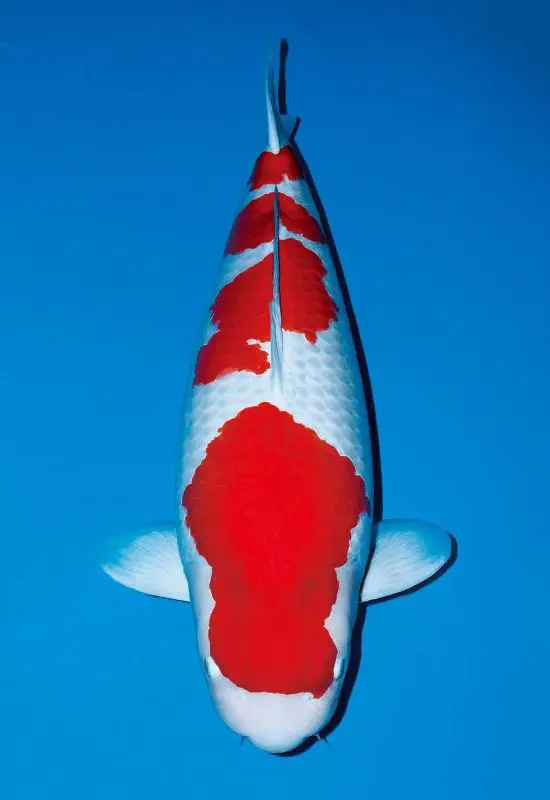
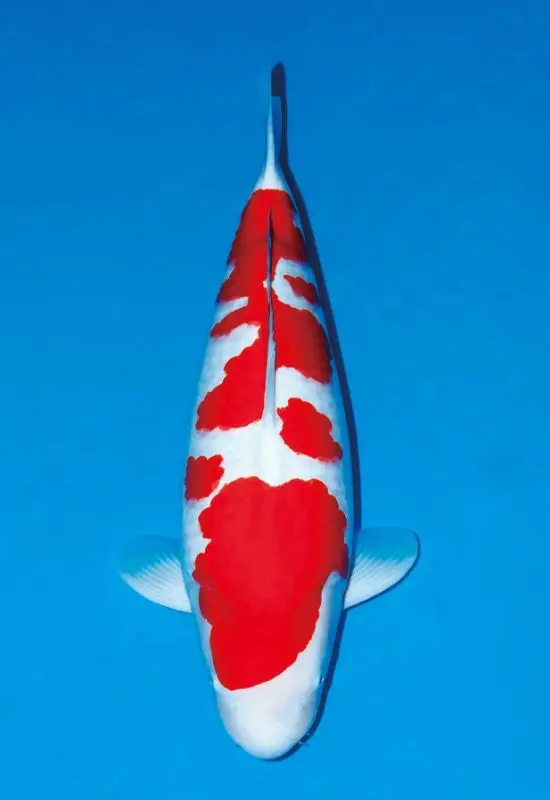
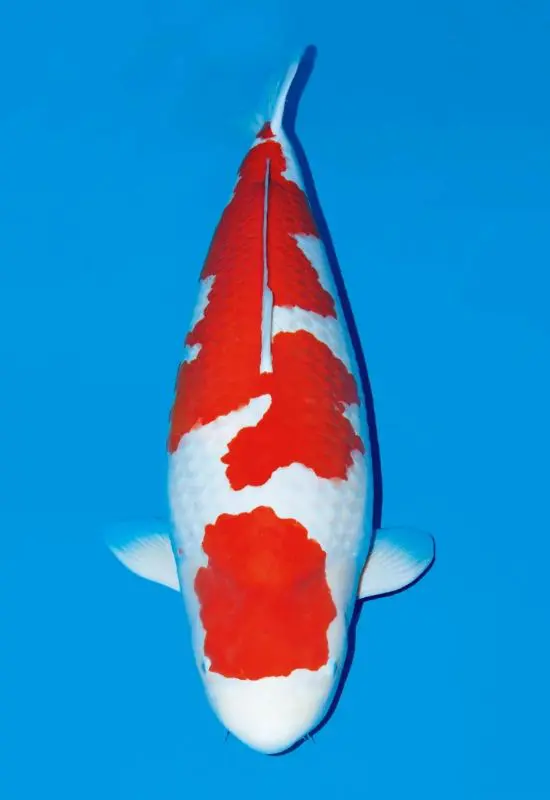

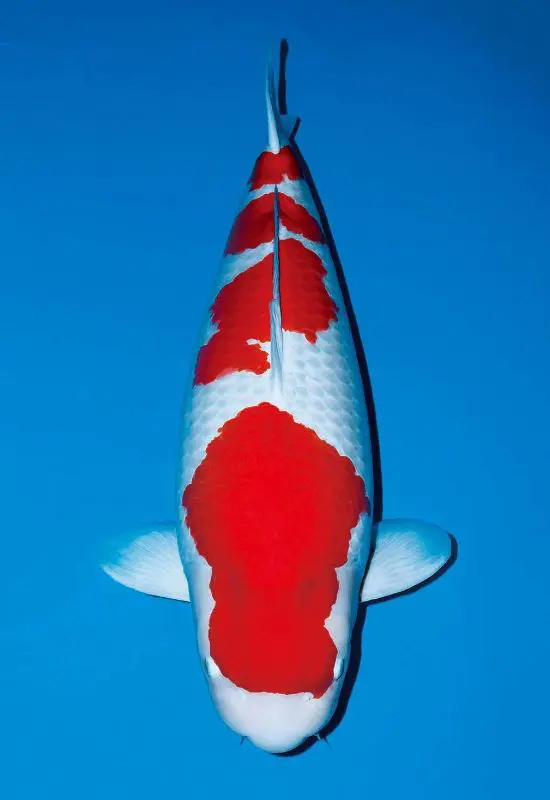
Taisho-sanshoku
Taisho-sanshoku basically has a Kohaku color pattern, and it has black imprints called “urushizumi” in Japanese, which is a characteristic of this variety. It was named Taisho-sanshoku because it was produced in the beginning of the Taisho period in the history of Japan, along with the three colors of the white background and red and black imprints seen in this carp.
The ideal Taisho-sanshoku is considered to be based on the pattern of the Kohaku, with shiny black imprints placed in good balance across the body.
JAS No.2002 Taisho-sanshoku
Taisho-sanshoku has a white body, and there are scarlet and black imprints across the body.
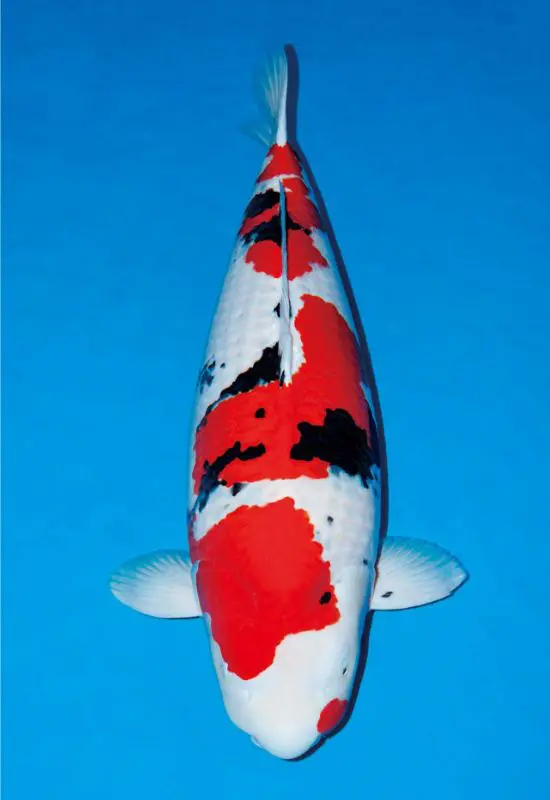
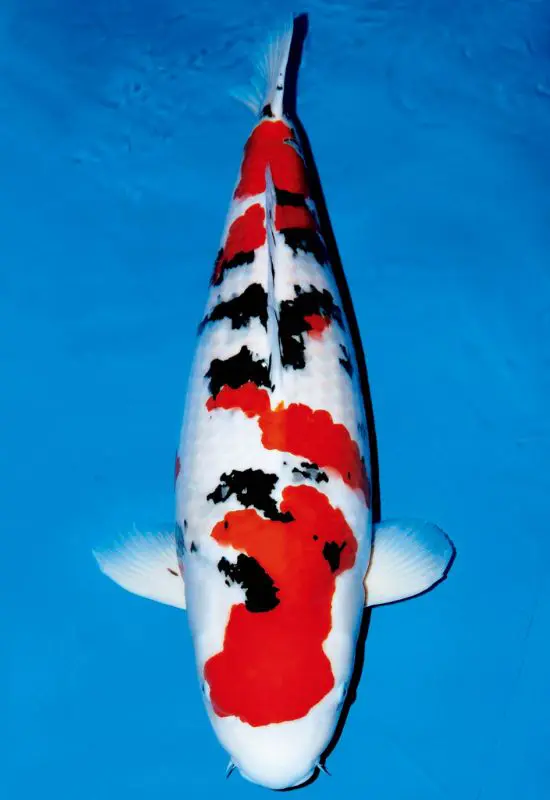
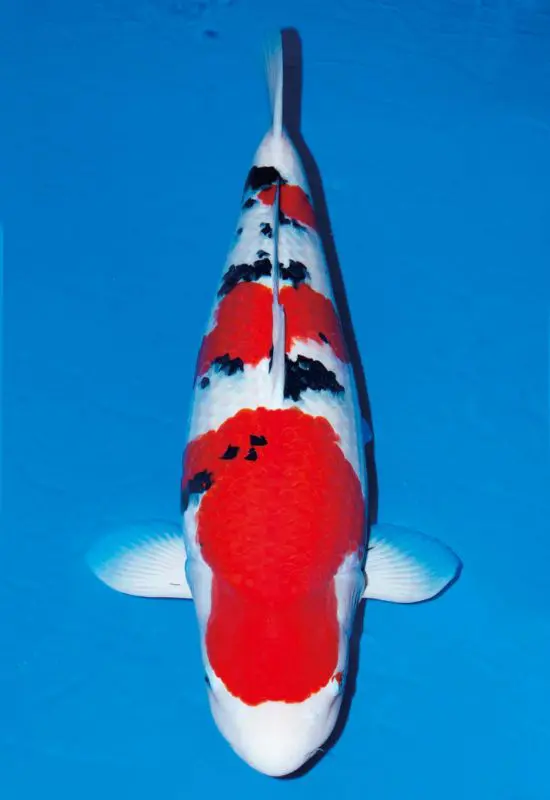
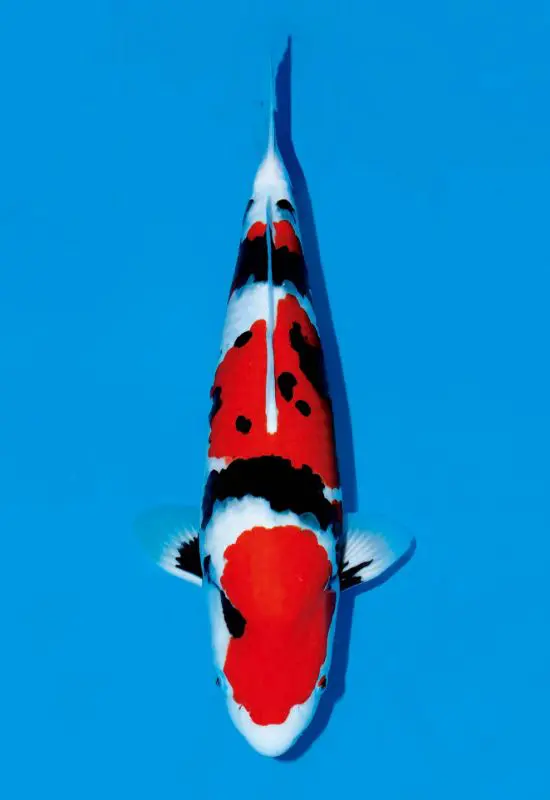
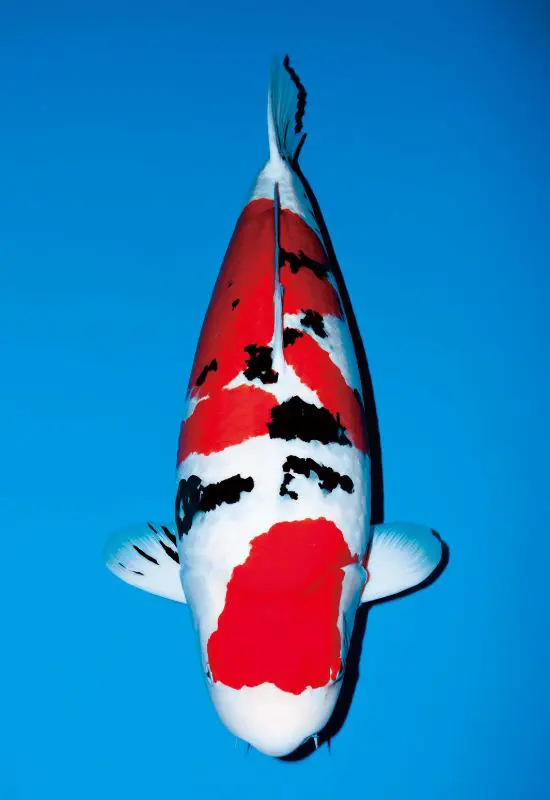
Showa-sanshoku
Showa-sanshoku is characterized by having a continuous shape of “Utsurizumi” derived from the black background, and it was named Showa-sanshoku because it was produced at the beginning of the Showa period in the history of Japan.
For Showa-sanshoku, it is said that the one with the ink-colored pattern that rolls up from the belly to the back and the ink-colored pattern that splits the face in half is good.
Showa-sanshoku tends to have headband-shaped ink patterns on its head, and the base of the pectoral fins is characterized by being blackened.
JAS No.2003 Showa-sanshoku
Showa-sanshoku has a black body (black background), and there are scarlet and white imprints across the body. In general, the base of the pectoral fin is on a black background, but in the process of growth, there are some that change from a white background to a black background. There are also individuals with a continuous black background that does not have a mottled shape called “utsuri-zumi” in Japanese.
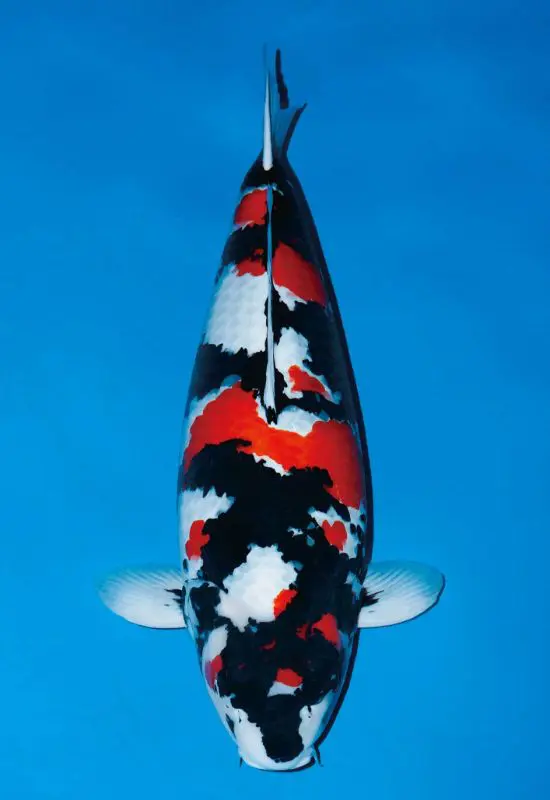
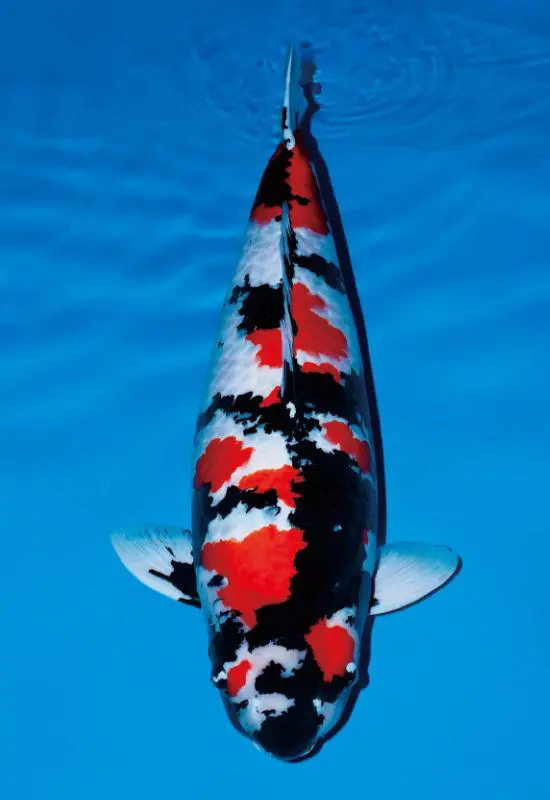

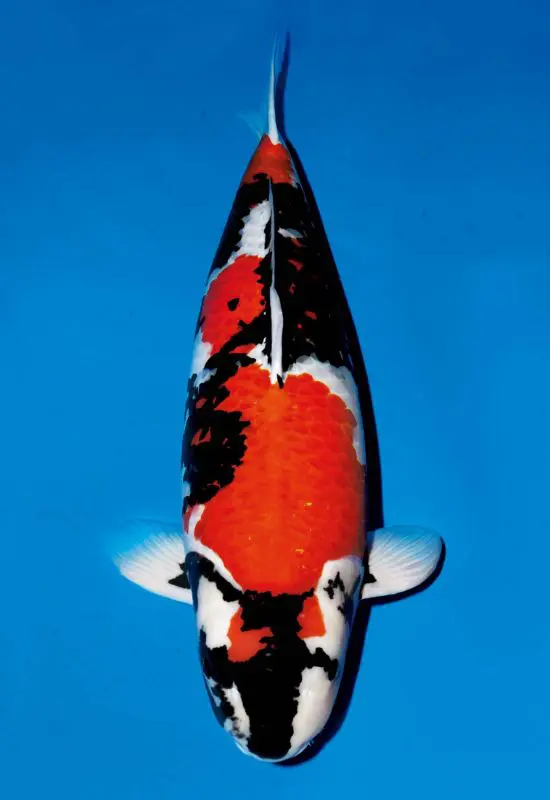
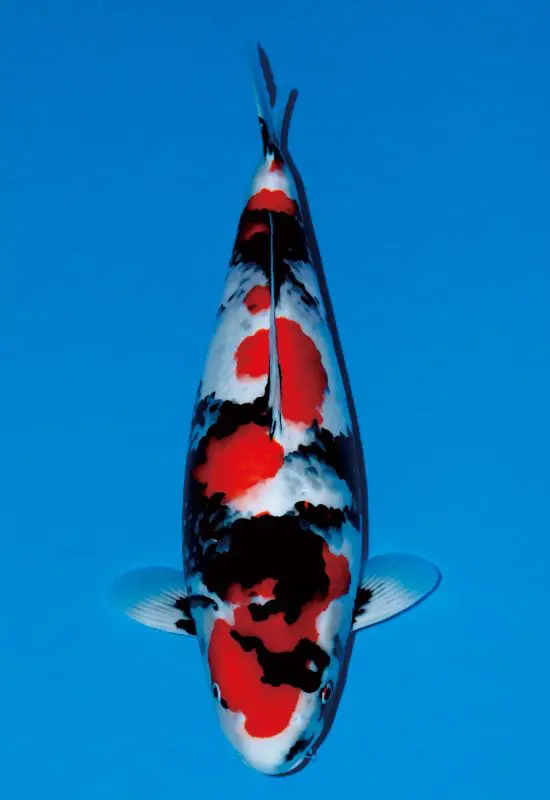
Shiroutsuri
Shiroutsuri is a variety that has a continuous pattern of Utsurizumi, which is derived from the black background, just like Showa-sanshoku. The white and black body color is monotone with no red imprints. It looks similar to the “white tortoiseshell” that will be introduced later, but the color of the ink is different. It is easy to understand if you remember that Showa-sanshoku without the red imprints is Shiroutsuri, and Taisho-sanshoku without the red imprints is Shiro-bekko.
For Shiroutsuri, it is said that the one with more white imprints and the ink pattern that is well-proportioned from head to tail and swirls up is good.
JAS No.2004 Shiroutsuri
Shiroutsuri has a black body, and there are white imprints across the body. There are also individuals that have “utsuri-zumi”across the body. Similar to Bekko, but distinguishable from the black background.
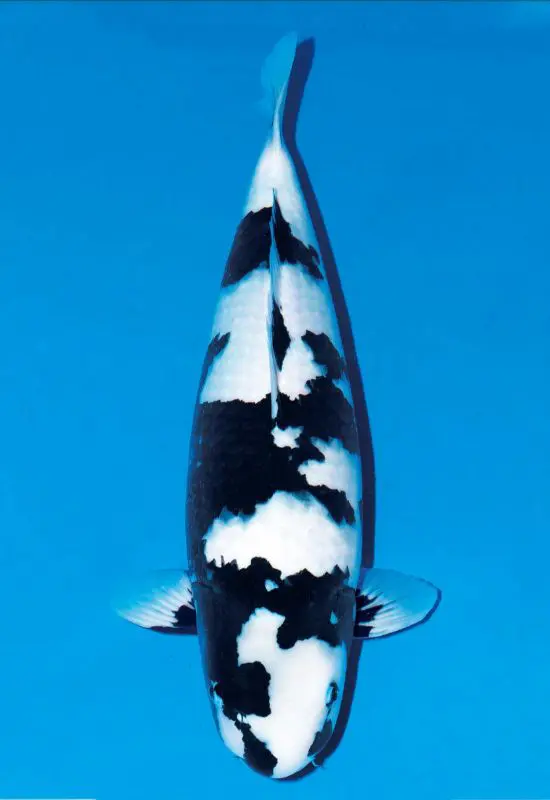
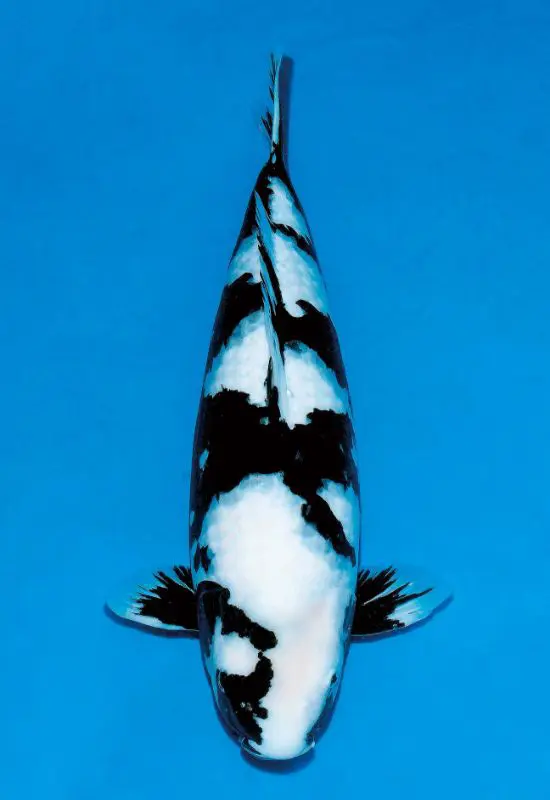
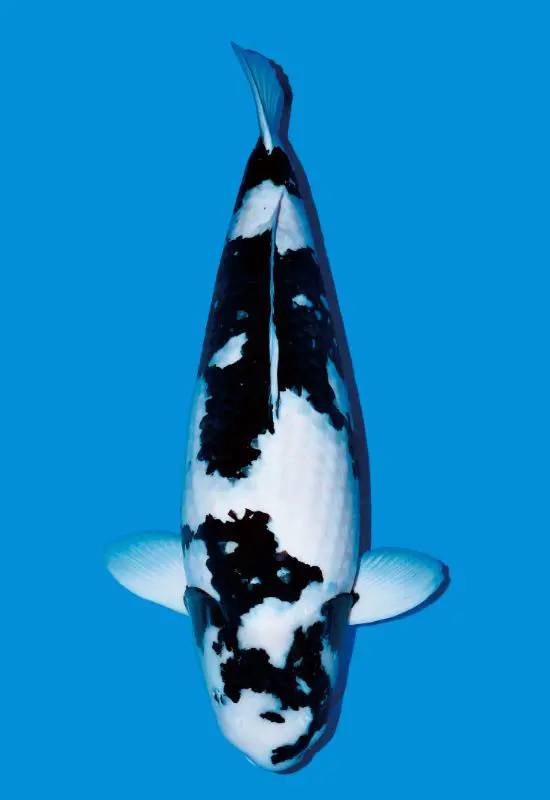

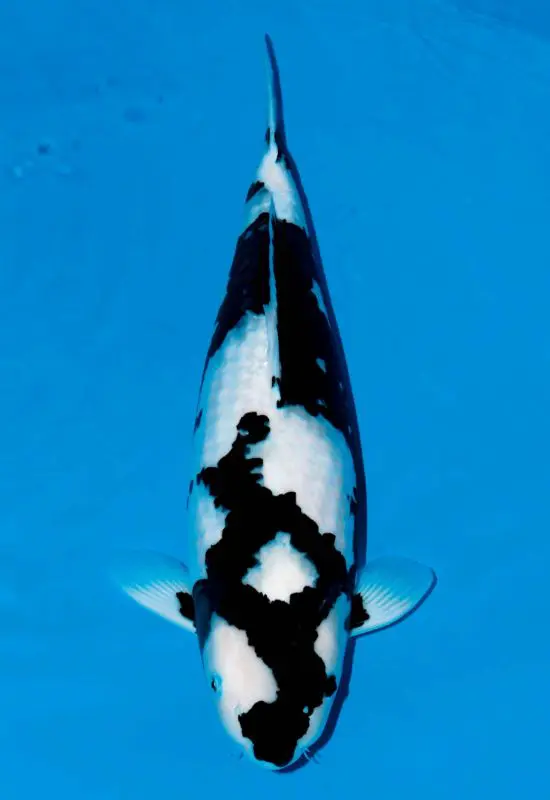
Goshiki
Goshiki was produced by crossbreeding Asagi and Taisho-sanshoku, and it is named after the five colors of blue and dark blue that Asagi has and Taisho-sanshoku has white, red and black. Today, regardless of these five colors, individuals that have pale yellow patterns and red imprints on a white background are called Goshiki. In addition, depending on the appearance of colors and patterns, there are also things called “Mameshibori-goshiki”, “Black-goshiki”, “Goshiki-sanshoku”, and “Goshiki-showa”.
The splendid Goshiki are said to have a uniform black or bluish-white light-yellow background all over the body, and the red pattern to be black, clean, and with a clear contrast.
JAS No.2005 Goshiki
Goshiki has an indigo or light blue body, except for the head. It has a mesh pattern on the entire back due to the arrangement of scales called “asagidi” in Japanese. Some individuals has a scarlet imprints across the body, and scarlet imprints have indigo or light blue and some do not. Some have black imprints. It is similar to Koromo, but it can be distinguished from the Goshiki that it is “asagidi”.
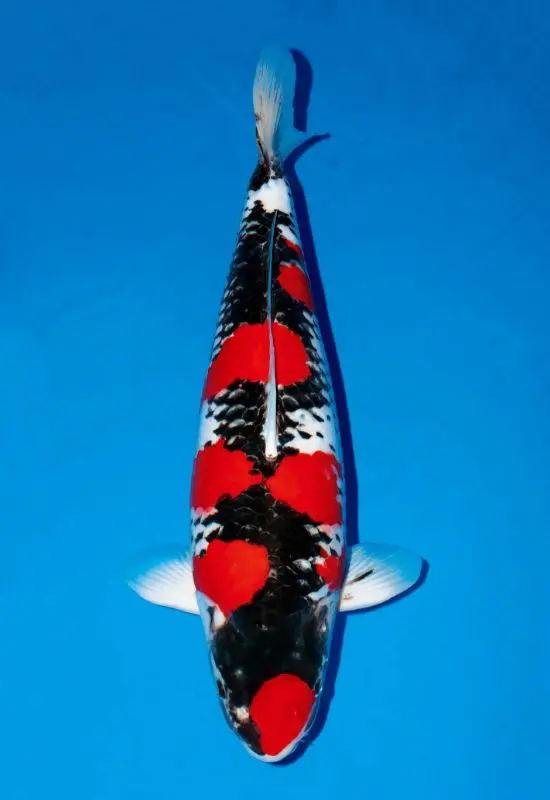
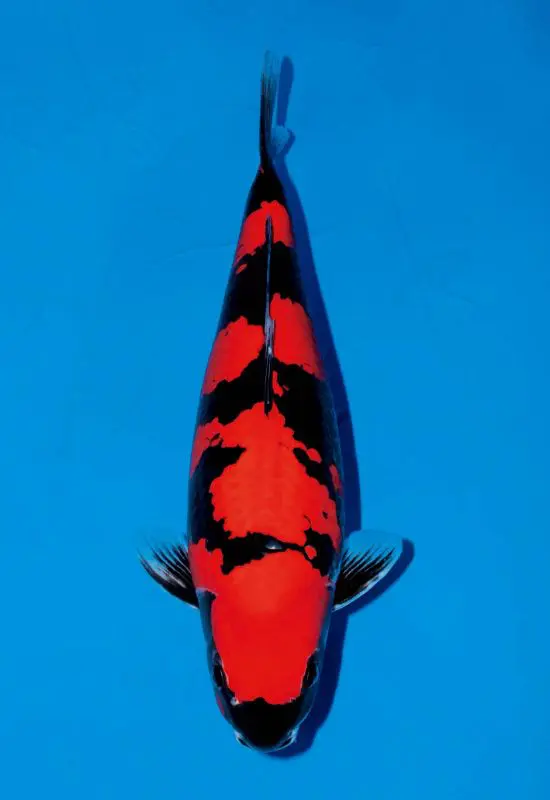
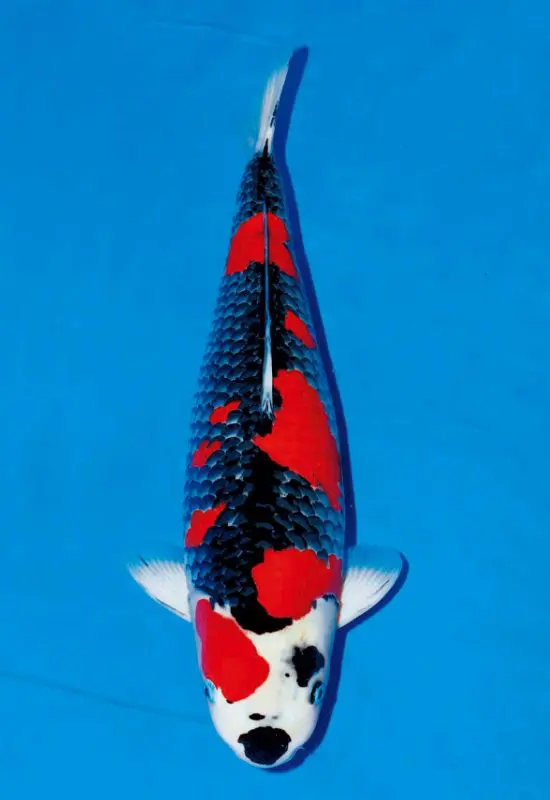
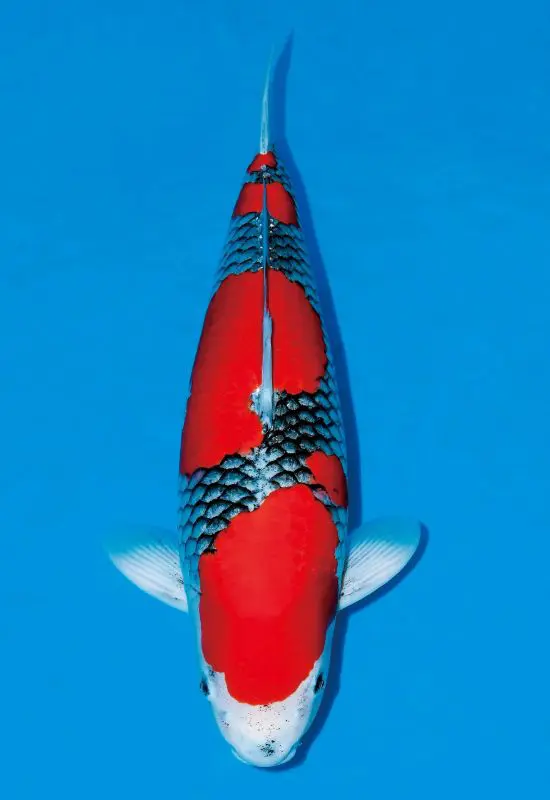
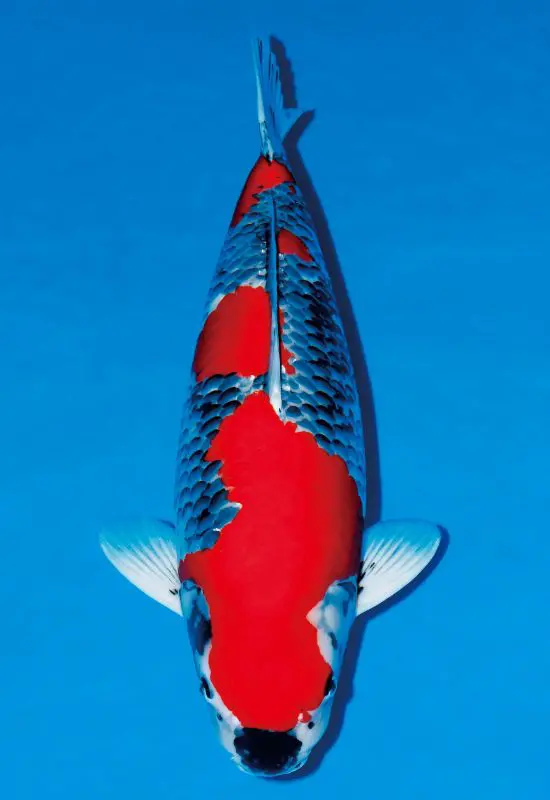
A-ginrin
A-Ginrin is the name given to individuals with shining scales that have the characteristics of the Gosanke (Kohaku, Taisho-sanshoku, Showa-sanshoku). Ginrin refers to those developed so that only the scales shine in gold or silver. There are varieties such as Ginrin-kohaku, Ginrin-taisho-sanshoku and Ginrin-showa-sanshoku. Among these varieties, the one with the brightest light is called Diamond-ginrin, and the one with a round central part is called Pearl-ginrin.
It is said that the ones with shining scales neatly arranged all over the body and the ones with strong light are good.
JAS No.2006 A-ginrin
Nishikigoi belonging to A-ginrin has shine golden scales on the scarlet imprints or silver scales on the white body, and those having the appearance characteristics of Kohaku, Taisho-sanshoku, or Showa-sanshok.
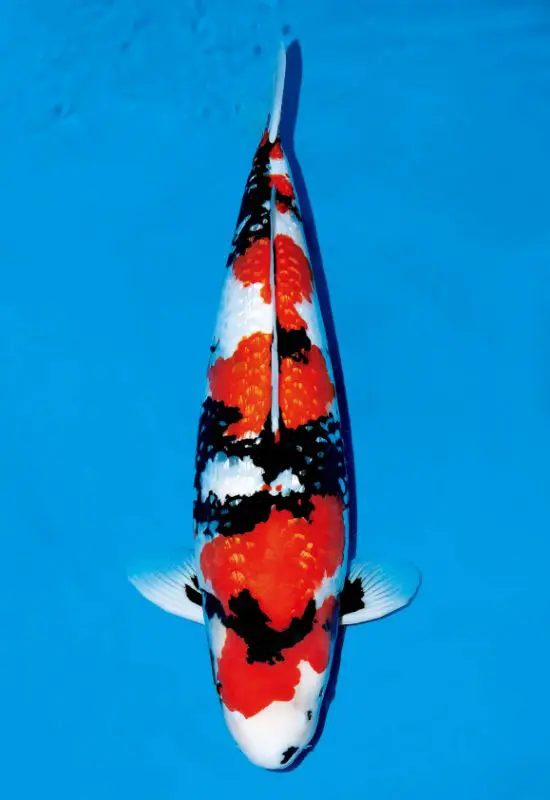
B-ginrin
B-ginrin is the name of an individual with shining scales that shows the characteristics of breeds other than the Gosanke (Kohaku, Taisho-sanshoku, Showa-sanshoku). There are varieties such as Ginrin-shiroutsuri, Ginrin-goshiki, Ginrin-asagi, and Ginrin-ochiba, and it is a breed that represents the splendor of Nishikigoi along with Hikari-moyo.
Like “A-Ginrin”, it is said to be good if the shining scales are neatly arranged all over the body and the light is strong.
JAS No.2007 B-ginrin
Nishikigoi belonging to B-ginrin has shine golden scales (on the scarlet imprints, etc.) or silver scales (on the white backgrounds, etc.), excluding nishikigoi belonging to A-ginrin. B-ginrin Wagoi Ginrin Hikarim
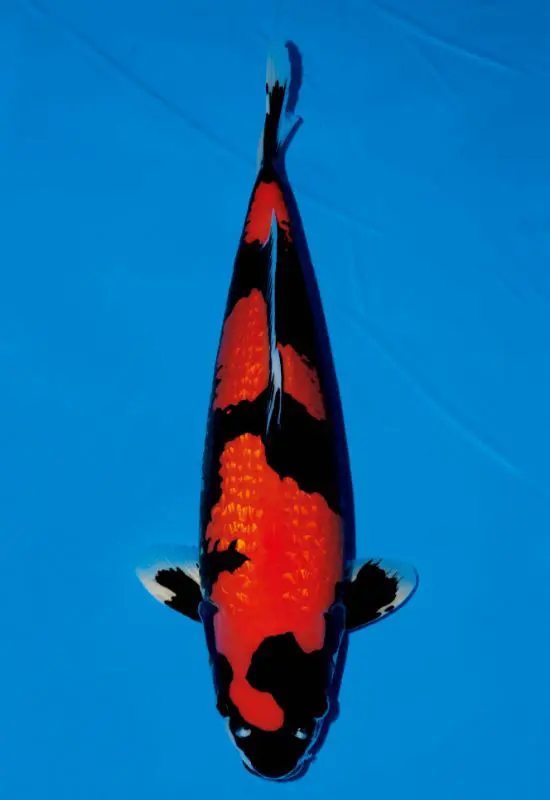
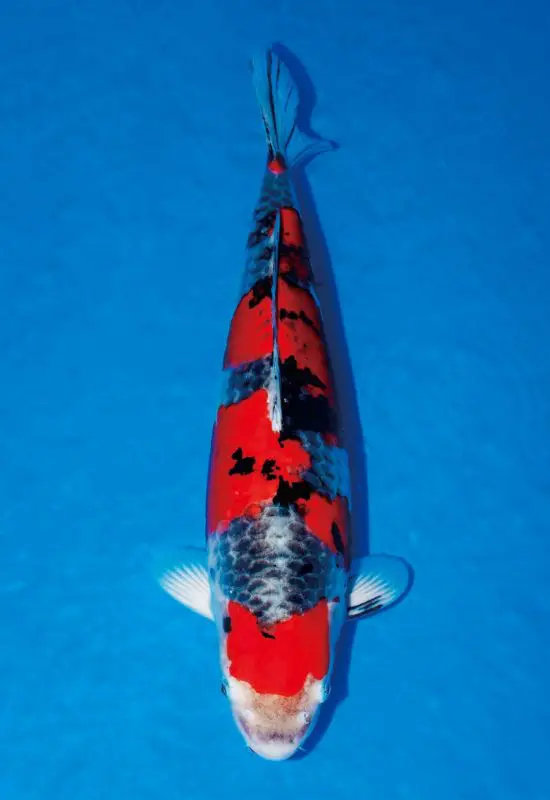
Goshiki-sanshoku
Goshiki-sanshoku has the appearance characteristics of Taisho-sanshoku and has a “asagidi” pattern. Some scarlet imprints have indigo or light blue, while others do not.
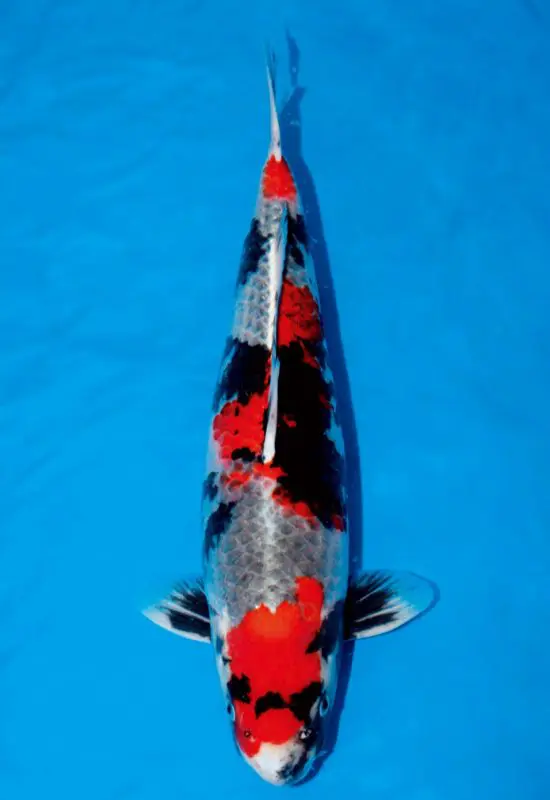
Goshiki-showa
Goshiki-showa has the appearance characteristics of Showa-sanshoku and has a “asagidi” pattern. Some scarlet imprints have indigo or light blue, while others do not.
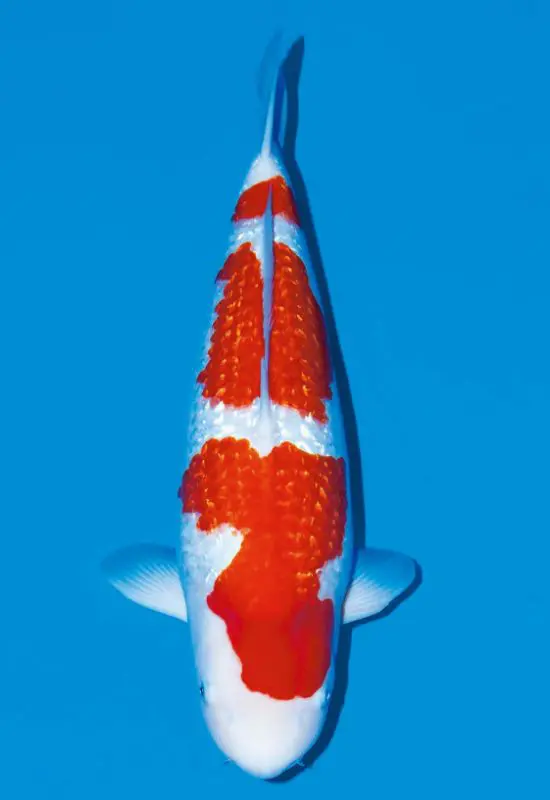
Ginrin-kohaku
Ginrin-kohaku has shine golden or silver scales, and has the appearance characteristics of Kohaku.
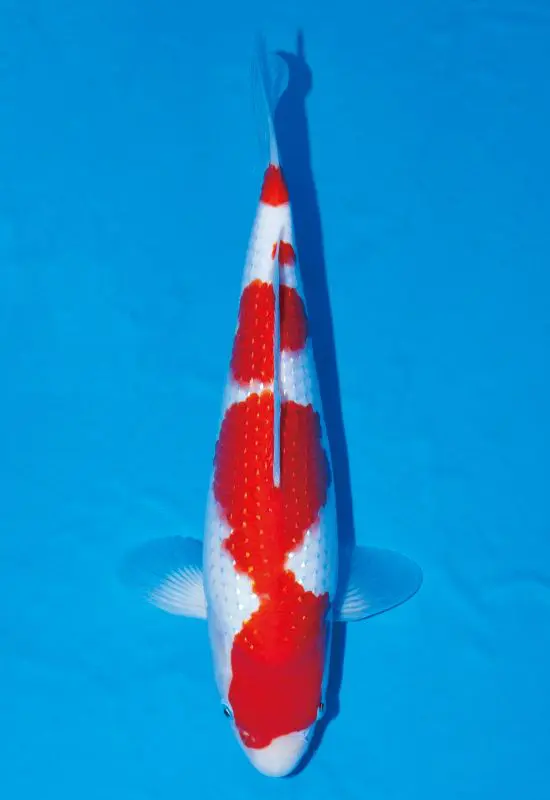
Pearl-ginrin-kohaku
Pearl-ginrin-kohaku has scales that shine round and golden or silver in the center, and has the appearance characteristics of Kohaku.
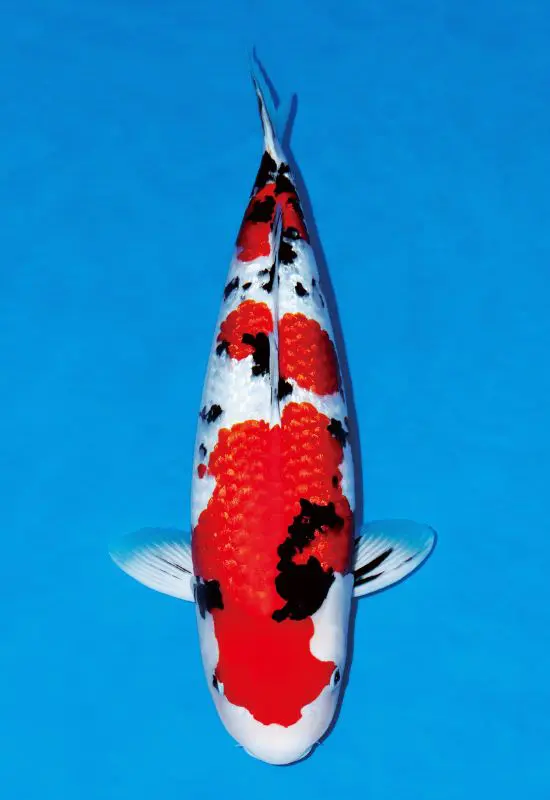
Ginrin-taisho-sanshoku
Ginrin-taisho-sanshoku has shine golden or silver scales, and has the appearance characteristics of Taisho-sanshoku.
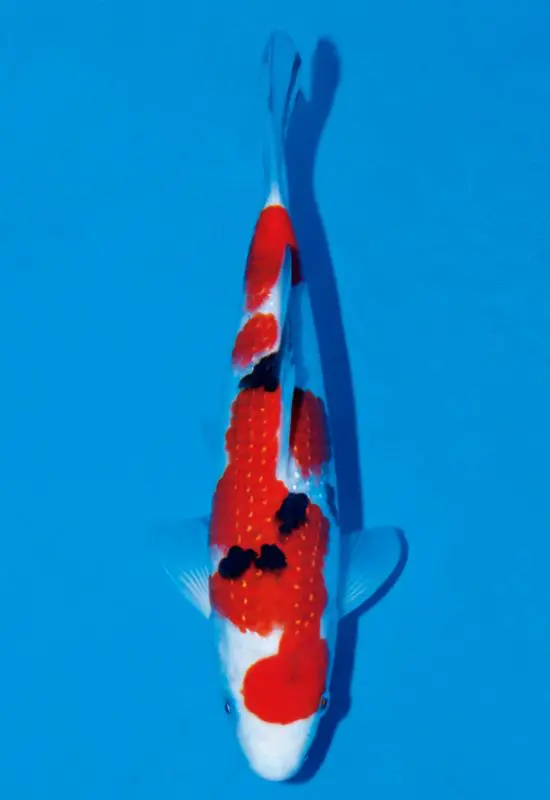
Pearl-ginrin-taisho-sanshoku
Pearl-ginrin-taisho-sanshoku has scales that shine round and golden or silver in the center, and has the appearance characteristics of Taisho-sanshoku.
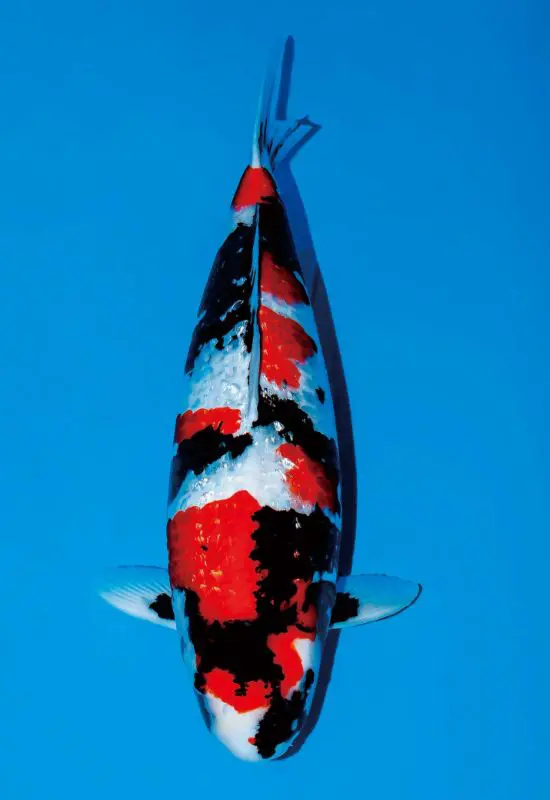
Ginrin-showa-sanshoku
Ginrin-showa-sanshoku has shine golden or silver scales, and has the appearance characteristics of Showa-sanshoku.

Ginrin-sakura-ogon
Ginrin-sakura-ogon has shine golden or silver scales, and has the appearance characteristics of Sakura-ogon.

Ginrin-kin-showa
Ginrin-kin-showa has shine golden or silver scales, and has the appearance characteristics of Kin-Showa.

Ginrin-shiroutsuri
Ginrin-shiroutsuri has shine silver scales, and has the appearance characteristics of Shiroutsuri.

Ginrin-goshiki
Ginrin-goshiki has shine golden or silver scales, and has the appearance characteristics of Goshiki.

Ginrin-kujaku
Ginrin-kujaku has shine golden or silver scales, and has the appearance characteristics of Kujaku.

Ginrin-ai-goromo
Ginrin-ai-goromo has shine golden or silver scales, and has the appearance characteristics of Ai-goromo.

Ginrin-budo-goromo
Ginrin-budo-goromo has shine golden or silver scales, and has the appearance characteristics of Budo-goromo.

Ginrin-yamabuki-ogon
Ginrin-yamabuki-ogon has shine golden or silver scales, and has the appearance characteristics of Yamabuki-ogon.

Ginrin-platinum-ogon
Ginrin-platinum-ogon has shine silver scales, and has the appearance characteristics of Platinum-ogon.

Ginrin-orange-ogon
Ginrin-orange-ogon has shine golden or silver scales, and has the appearance characteristics of Orange-ogon.

Ginrin-asagi
Ginrin-asagi has shine silver scales, and has the appearance characteristics of Asagi.
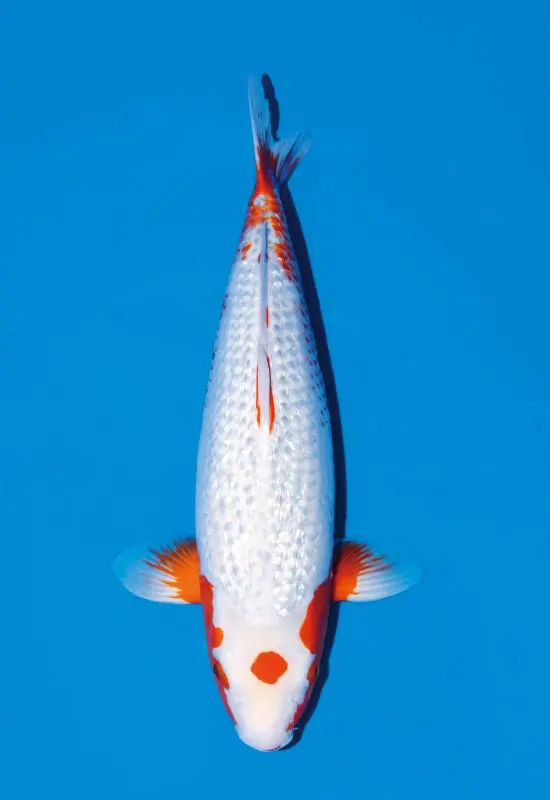
Ginrin-yuki-asagi
Ginrin-yuki-asagi has a white body and shine silver scales. It has red imprints on the belly.
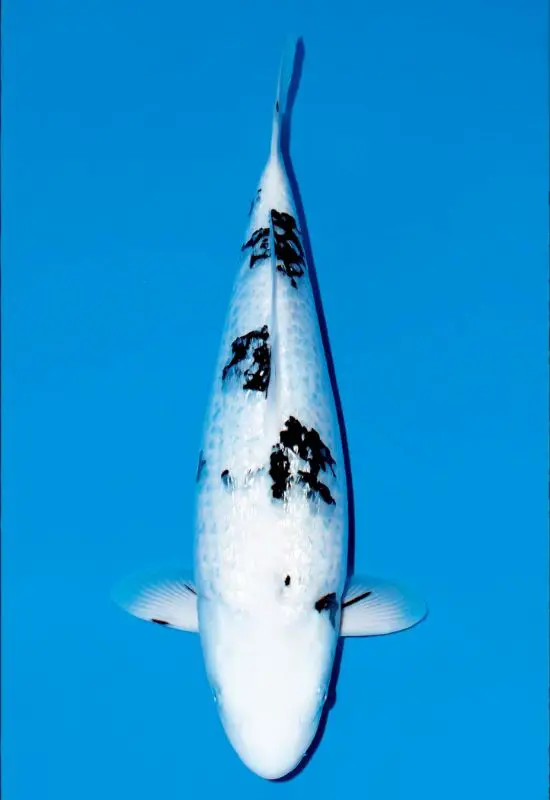
Ginrin-shiro-bekko
Ginrin-shiro-bekko has shine silver scales, and has the appearance characteristics of Shiro-bekko.
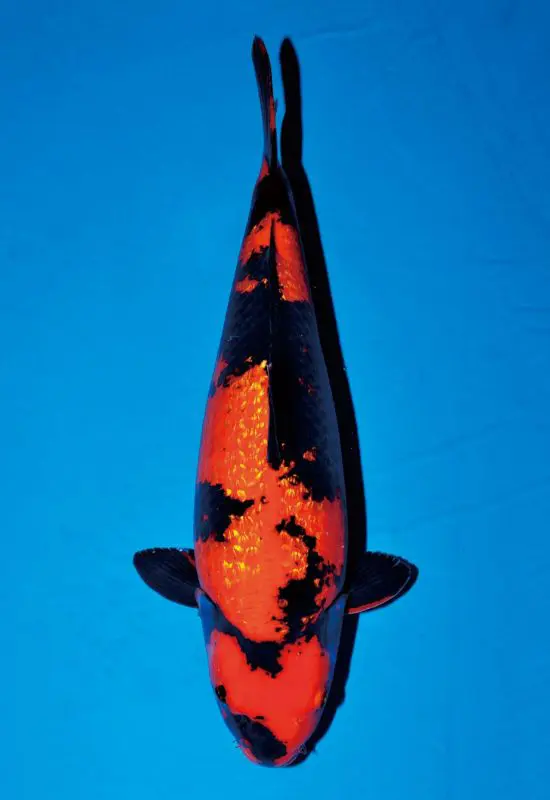
Ginrin-hiutsuri
Ginrin-hiutsuri has shine golden or silver scales, and has the appearance characteristics of Hiutsuri.

Ginrin-kiutsuri
Ginrin-kiutsuri has shine golden or silver scales, and has the appearance characteristics of Kiutsuri.

Ginrin-aka-muji
Ginrin-aka-muji has shine golden or silver scales, and has the appearance characteristics of Aka-muji.

Ginrin-shiro-muji
Ginrin-shiro-muji has shine silver scales, and has the appearance characteristics of Shiro-muji.
